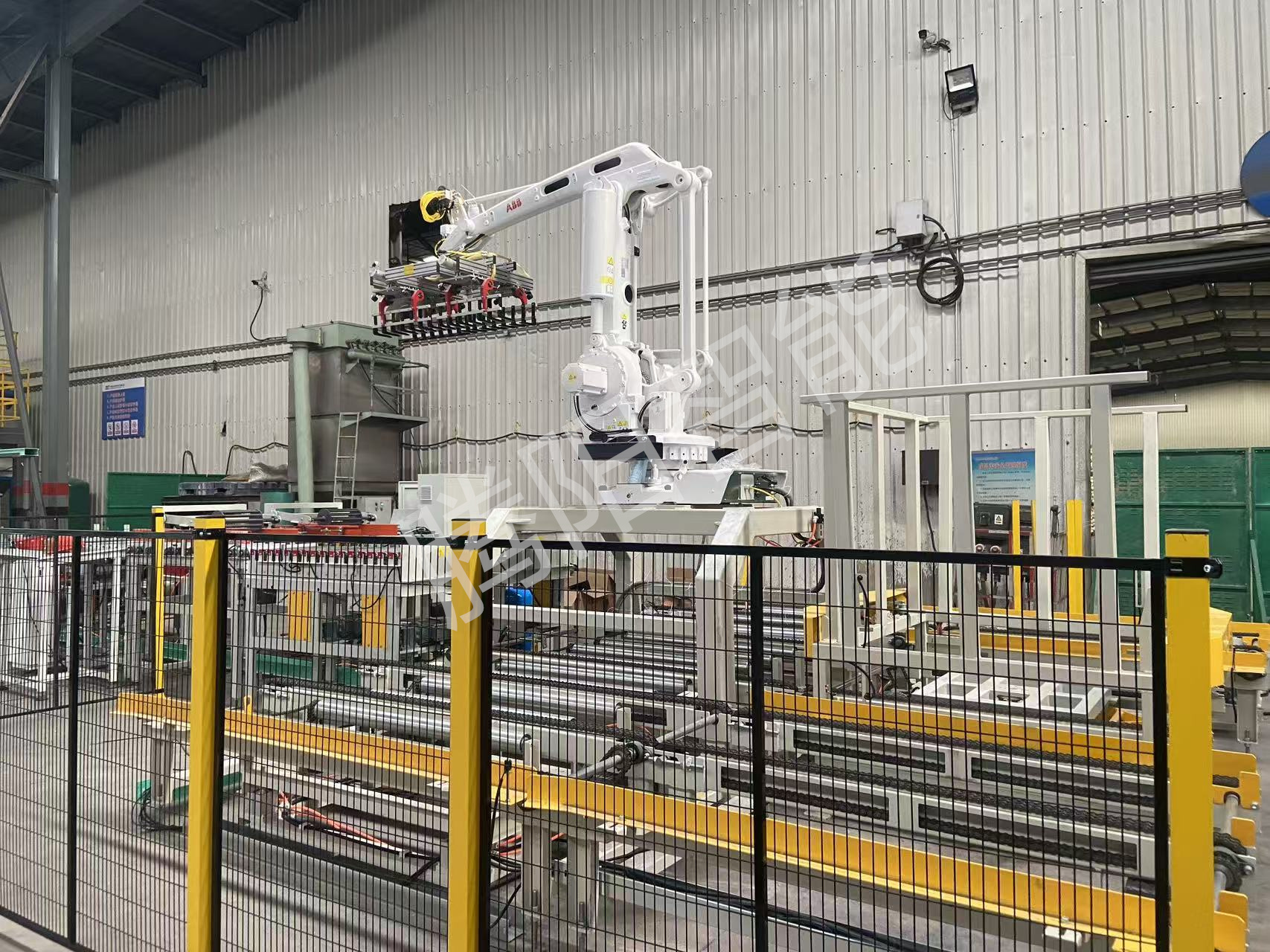Industrial robots reshape the new ecology of flexible production
Release time:
2025-06-09
Today, as the wave of Industry 4.0 sweeps the world, the intelligent transformation of the manufacturing industry is no longer a choice, but a survival proposition. According to statistics from the International Federation of Robotics (IFR), 68% of manufacturing companies in the world are still forced to repeatedly weigh between "soaring labor costs" and "automation risks" due to the complexity and uncertainty of palletizing scenarios.

Today, as the wave of Industry 4.0 sweeps the world, the intelligent transformation of the manufacturing industry is no longer a choice, but a survival proposition. According to statistics from the International Federation of Robotics (IFR), 68% of manufacturing companies in the world are still forced to repeatedly weigh between "soaring labor costs" and "automation risks" due to the complexity and uncertainty of palletizing scenarios.
In the field of palletizing, which is known as "an important link in logistics", an invisible tug-of-war between efficiency and safety is still ongoing - traditional manual palletizing is inefficient and has frequent safety hazards, while early automation equipment is too rigid and insufficiently flexible, making it difficult to adapt to the production needs of multiple varieties and small batches. When "quick response production" and "zero inventory management" become industry keywords, how to use evolvable intelligent equipment to solve this dilemma has become the core pain point of manufacturing industry upgrades.
1. Zero-sum game between safety and efficiency
Manual palletizing faces problems such as high physical exertion and repetitive strain, while early automation equipment lacks precise anti-collision mechanisms, such as "invisible mines" on the production line, resulting in many hidden dangers in human-machine collaboration. A collision may cause a production line shutdown or even personal injury, putting the company in a zero-sum game dilemma between safety and efficiency, making it difficult to achieve an organic unity between the two.
2. The "rigid shackles" of flexible production lines
Multi-variety, small-batch production mode has become the mainstream, but the traditional palletizing system takes several hours to change the production line, and even requires professional engineers to debug on site. Faced with frequent switching order requirements, companies often miss market opportunities due to "rigid" equipment.
3. The dual constraints of space efficiency and operation dimensions
The huge physical architecture of traditional palletizing equipment occupies a large amount of production space, reduces the utilization rate of factory buildings, and the contradiction of "space is cost" becomes increasingly acute. Its complex operation interface and professional programming logic have built a technical barrier. This not only increases the cost of equipment operation and maintenance, but also delays the technology transformation cycle, forming a double shackle that hinders the intelligent upgrade of enterprises, making it difficult to adapt to the flexible production needs of the Industrial 4.0 era.
The innovative technology of Tengyang Industrial Robot is like a smart key, accurately unlocking the palletizing problem in the Industrial 4.0 era and injecting strong momentum into the upgrading of the manufacturing industry. In the field of industrial manufacturing, its disruptive technology has broken the efficiency bottleneck of the traditional production model, and has elevated the safety of human-machine collaboration and production flexibility to a new level, pushing enterprises from "experience-driven" to a new stage of "data-driven" intelligent production, and accelerating the transformation of the industrial chain towards high-end and intelligent development.
Latest News
Unpacking and Feeding Robots: Ushering in a New Era of Unmanned Raw Material Handling!
In modern factories, raw material unpacking and feeding are experiencing revolutionary breakthroughs! By fully automating the entire process, unpacking and feeding robots completely eliminate the pain points of manual operations, such as low efficiency, excessive dust, and high labor intensity.
2025-10-27
Column Palletizer: Efficient Palletizing Expert in Compact Spaces
How can you achieve efficient palletizing in space-constrained factory environments? Column palletizers, with their unique structural design and superior performance, are the ideal solution for palletizing in tight spaces!
2025-10-20
The era of manual palletizing is over!
On modern production lines, manual palletizing is gradually becoming a thing of the past. Faced with increasing productivity and cost pressures, traditional manual palletizing can no longer meet the needs of business development. The emergence of palletizing robots has completely changed this situation!
2025-10-13
Palletizers: Improving Efficiency Starts Here
In the increasingly competitive manufacturing and logistics sectors, continuously improving efficiency and reducing costs have become core concerns for companies. Palletizing, as a critical step in the production process, directly impacts overall operational effectiveness. The introduction of palletizers is a crucial starting point for companies to achieve breakthroughs in efficiency.
2025-09-29
Small Carton Collaborative Palletizing Station: A Flexible, Efficient, Intelligent Upgrade Option!
For small-batch, high-variety carton palletizing, traditional large-scale palletizing systems are often cumbersome and uneconomical. However, the Small Carton Collaborative Palletizing Station, with its flexibility, safety, and efficiency, is becoming an ideal solution for small and medium-sized businesses!
2025-09-22
Palletizing Robots Improve Efficiency in Feed and Pet Food Projects
In the feed and pet food industry, expanding production scale and intensifying market competition have made efficiency improvements crucial. Palletizing, the final process before shipment, is traditionally performed manually, characterized by low efficiency, high costs, and high labor intensity, becoming a production bottleneck. The application of palletizing robots is bringing a new solution to the industry!
2025-09-15




